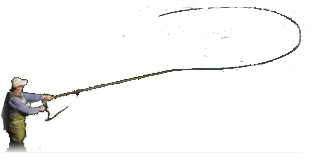Aged Sage,
I understand exactly what you're talking about. I've taught courses very much like you're describing...even undergraduate university courses with lab fees and tuition. We did all of these through two different FFF clubs in Missouri while I lived up there. The university course was the Southern Council Club of the Year for 2008's sole fundraiser every year. Club members taught the course and donated the instructor fees (PE adjunct faculty at a major state university) to the club. They've been doing it for a long time now.
That 50% progression rate is pretty good. It means you're teaching a high quality class. However, I have found through all of my various fly tying course development, teaching, and management over the years that when students are GIVEN a kit to KEEP that number increases to about 75% - all other things being equal. I've also found that an "across the board" average progression/retention rate from a wider sample of programs from around the country (all of which I had a big hand in designing and implementing) is about 40% vs. 50% if kits are not given to students, but loaned. So a jump to 75% runs between a 50% and 66% increase in progression among the introductory fly tying students results from giving them their own tools, remaining materials, instructional materials, some catalogs, a membership in an area club for 1 year, and a list of on-line resources for their future growth (of which FAOL's fly tying resources appears at the top). It is the "now go ye therefore and tie more flies," approach. I want students leaving with a complete answer to the question: so now what? And when they get that, about 3 out of 4 of them continue to tie flies for as long as 4 years that I have been tracking them now. Furthermore, about 1 in 5 begin teaching OTHER PEOPLE to tie flies after they leave my classes! And I KNOW that I know that it is because they walk away with the tools, materials, skills, knowledge, and resources to continue to grow and enjoy fly tying.
Finally, I am concerned with the cost-of-entry for the STUDENT first and foremost. I want that to be as close to ZERO as possible. That means someone else has to pay for it. In many of the programs that I develop, it HAS to be zero to the student. So you're using government funding or private donations most of the time. Trying to secure long-term funding for these types of programs isn't easy. But when the clinicians we're supporting see the results it gets a LOT easier! So the key is to get the funding for the FIRST series of classes and then try to nail down the long-term money behind that. If we could raise enough money to fund these start-ups internally, we could start at least 30 new programs per year with our existing resources and demand that we KNOW ABOUT. As it is, we can't afford to pay attention because charitable giving has dried up to next to nothing for small non-profits. We had a 500% growth rate in the number of certified instructors this year, but not fly tying instructors. It was about 2:1 in favor of casting instructors. BUT...as our pool of certified instructors around the country grows, that number of programs we could start if the $$$ was in the bank to do it will grow exponentially in proportion to the number and distribution of those instructors. In just ONE major metro area, AFFI could easily train and develop over 200 new fly anglers and tiers per year...all of whom would be people with special needs and/or their family members/primary caregivers. That would mean 200 new FFF members per year, about 2/3 of whom would renew their memberships the following year. So you're looking at about 150 new FFF members/real fly anglers/tiers per year just from ONE program in ONE city. And they say there's nothing we can do about the aging and shrinking fly fishing population...




 Reply With Quote
Reply With Quote